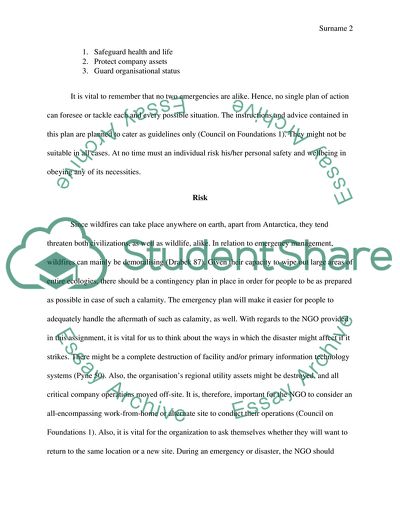Cite this document
(An NGO Evacuation Scenario before an Anticipated Wildfire Disaster Report Example | Topics and Well Written Essays - 1250 words - 1, n.d.)
An NGO Evacuation Scenario before an Anticipated Wildfire Disaster Report Example | Topics and Well Written Essays - 1250 words - 1. https://studentshare.org/environmental-studies/1802484-an-ngo-evacuation-scenario-before-an-anticipated-wildfire-disaster
An NGO Evacuation Scenario before an Anticipated Wildfire Disaster Report Example | Topics and Well Written Essays - 1250 words - 1. https://studentshare.org/environmental-studies/1802484-an-ngo-evacuation-scenario-before-an-anticipated-wildfire-disaster
(An NGO Evacuation Scenario before an Anticipated Wildfire Disaster Report Example | Topics and Well Written Essays - 1250 Words - 1)
An NGO Evacuation Scenario before an Anticipated Wildfire Disaster Report Example | Topics and Well Written Essays - 1250 Words - 1. https://studentshare.org/environmental-studies/1802484-an-ngo-evacuation-scenario-before-an-anticipated-wildfire-disaster.
An NGO Evacuation Scenario before an Anticipated Wildfire Disaster Report Example | Topics and Well Written Essays - 1250 Words - 1. https://studentshare.org/environmental-studies/1802484-an-ngo-evacuation-scenario-before-an-anticipated-wildfire-disaster.
“An NGO Evacuation Scenario before an Anticipated Wildfire Disaster Report Example | Topics and Well Written Essays - 1250 Words - 1”. https://studentshare.org/environmental-studies/1802484-an-ngo-evacuation-scenario-before-an-anticipated-wildfire-disaster.


